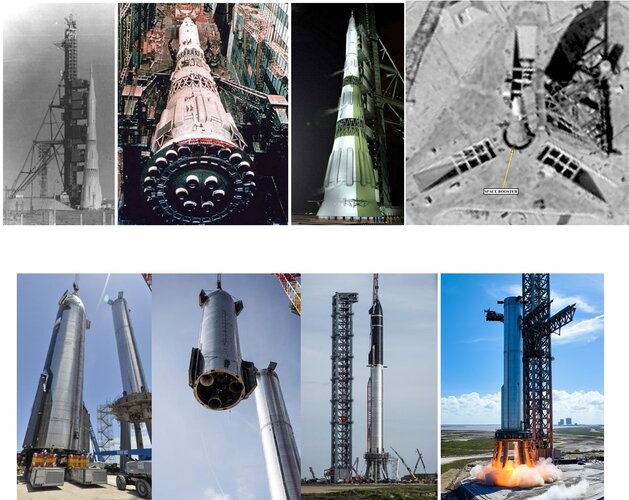russiafareast1972
life is discovery
- Joined
- 16 September 2022
- Messages
- 18
- Reaction score
- 48
Look at the old newsreel photos of the Soviet H1 rocket. Why didn't she go to the moon? Very poor launch pad - top right photo. Bad gas outlets. Conclusion: poor vertical thrust of the engines. A lot of engines at the bottom of the rocket. Inconsistency. Jet anarchy. Ideal launch pads at Baikonur and Cape Canaveral: large gas outlets, a huge tunnel for exhausting engine jet gases, good vertical thrust of the rocket at launch. Huge rockets need a huge launch pad and a huge exhaust gas tunnel. Look at the bottom photos. Starship. My opinion is an analogue of H1. Very small starting table. little gas outlet, looks like a stool. But - this is my opinion.
Attachments
Last edited:

